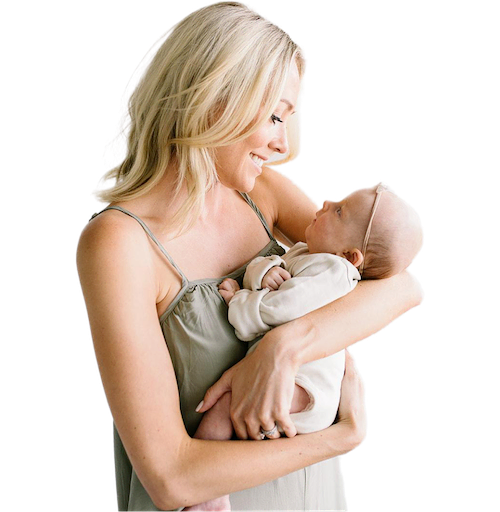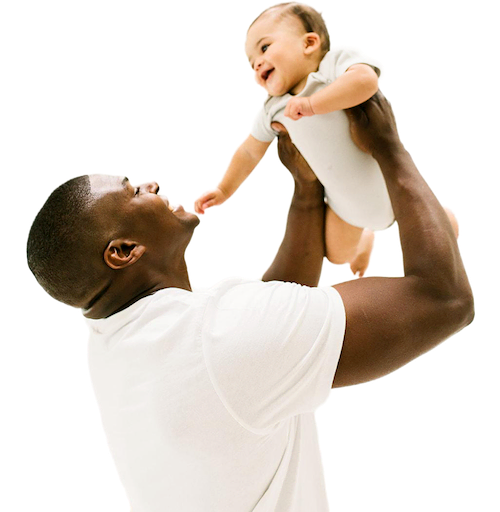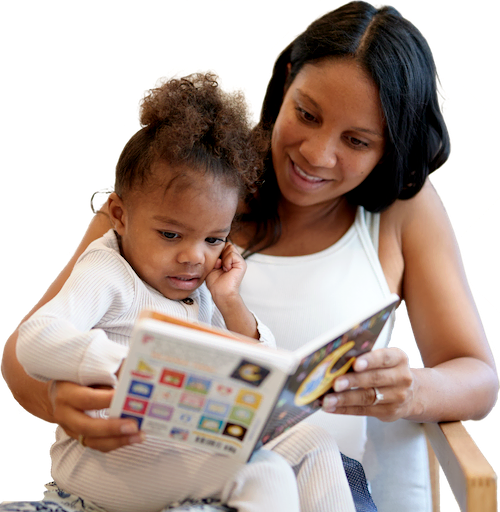Have you seen your brand new baby roll to their side in the fetal position? Many parents see this and ask if it’s safe for a newborn to sleep on their side. There’s actually a name for what you’re seeing: it’s called the newborn curl. I want to answer the most common questions that I get about the newborn curl and set your mind at ease.
What is the newborn curl?anchor
Have you ever placed your newborn on their back, and they curl to their side in the fetal position? This is the newborn curl.

Here’s why it happens: In the last couple months of pregnancy, a baby’s muscles begin to strengthen and curl into the fetal position. This gives them that nice tight, flexion you see in a full-term newborn. Flexion is an involuntary response for newborns and a sign of a healthy full-term baby. For brand-new babies, their natural resting position tends to have their little arms bent, their legs pulled in towards their belly, and even their hands curled into fists. Sometimes, when we lay them down on a flat surface, those muscles contract, and it can cause them to curl onto their side.
Interesting fact from my time working in the NICU: When babies are born prematurely (often before 35 weeks), we don’t see this tight, flexed position like we do in full-term infants. It’s common to see preemies lying with their arms and legs spread out flat. Why is this? Preemies simply didn’t grow big enough in the womb to require a tight curl as they push against the sides of the uterus. Also, preemies’ muscles haven’t yet strengthened enough to maintain that curled position.
If you’re heading home from the NICU, be sure to read more about how to safely transition from the NICU to your home.
Can newborns sleep on their side?anchor
No. The safest position for a newborn to sleep is on their back. For the first year of your baby’s life, you are always going to place them on their back for sleep.
If you happen to wake in the night and see your baby in the newborn curl, gently roll them onto their back. Please know, there is no need to wake up obsessively in the night. The newborn curl is not a reason to have anxiety, but rather, it’s a normal newborn physiological response that typically disappears after several weeks.
Is it safe to use an anti-roll pillow, rolled-up blanket, or sleep positioner for my newborn?anchor
No. The safest place for a baby to sleep is in a crib, bassinet, or play yard with a firm, flat surface and nothing else in the crib. That means, we don’t want to use any sleep positioners, pillows, or rolled blankets to keep your baby on their back. These are NOT safe and pose more of a risk.
There are some bassinets designed to help keep babies on their backs for sleep, like the Snoo or the Halo Bassinest (with the infant insert). Please know that these are not sleep positioners but rather bassinets approved by the Consumer Product Safety Commission (CPSC). If you have concerns about your newborn rolling, talk with your pediatrician about whether a bassinet like one of these would be a good option for your baby.
Is it safe to swaddle with the newborn curl? anchor
Yes! Swaddling is still safe for newborns until they are showing signs of rolling, and the newborn curl is not an actual sign of rolling. There is no need to transition out of the swaddle simply because you see the newborn curl.
Coming out of the swaddle too early will often make sleep more difficult. The swaddle replicates the feeling of being inside the womb and HELPS babies sleep safely on their backs.
However, please know that if your baby does roll all the way onto their tummy at any age, this is a sign to come out of the swaddle. Even though it may not be intentional rolling, I want you to trust your gut and talk to your pediatrician.
Expert Tip: Does your baby seem to hate the swaddle? My newborn class can help. I’ll show you the best tips for calming a fussy baby, including those babies who fight the swaddle, and so much more. Sometimes, it really is what comes AFTER the swaddle that makes the biggest difference. For many babies, swaddling is the first step towards getting longer stretches of night sleep. Don’t worry: I’ll show you all the rest of the steps too!
What age do babies roll over?anchor
According to the AAP, we typically see babies begin to roll around 3-4 months. Now, each baby develops on their own timeline. Some babies may begin a little earlier and some a little later. If you're concerned with your baby’s development, always talk with your pediatrician.
What are common signs of rolling? anchor
In order to roll over to their tummy, those trunk and core muscles will need to strengthen greatly.

When can babies sleep on their stomach?anchor
Most pediatricians will say that babies can safely sleep on their tummy when they are able to roll from back to stomach purposefully and consistently. Remember that we are always going to place a baby on their back for sleep. If they are able and choose to roll to their stomach for sleep, then it is generally considered safe to let them sleep this way (as long as you're using a safe sleep surface with no loose bedding). If your baby gets upset when they roll to their tummy, be sure to check out these tips for helping your baby adjust to tummy sleep.
If you have any questions about when it is safe for your baby to sleep on their stomach, please talk with your pediatrician.
Expert Tip: Please remember, if your baby is rolling, they need to be out of the swaddle.
Do I have to swaddle my newborn to use the Taking Cara Babies newborn class or First Five Months Bundle? anchor
No. A swaddle is never required to use my classes. However, research does show that swaddling, done correctly, is safe and helps babies sleep. For that reason, I do encourage swaddling for newborns, so long as it serves families well.
Please know my First Five Months Bundle teaches you so much beyond swaddling. It covers wake windows, setting up the environment, having a routine throughout the day, how to get longer stretches throughout the night, understanding naps and setting them up for success, and so much more.
Keep in mind that the information and content on this blog is for informational purposes and should not be considered medical advice. If you have questions about your child, please reach out to your doctor.








